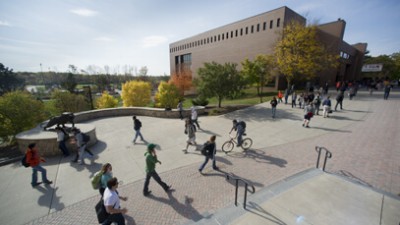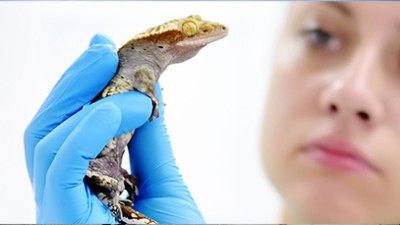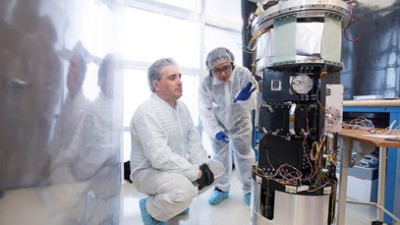Research News
- RIT/
- College of Science/
- Research/
- Research News
-
February 14, 2019
![bright and colorful stars in space]()
Faculty appointed leader of the Cosmic Evolution Survey
Assistant Professor Jeyhan Kartaltepe is assuming leadership of a team of more than 200 scientists worldwide collaborating to study how galaxies are influenced by both their fundamental physical properties and the environment that surrounds them.
-
January 24, 2019
![groups of students present posters to visitors]()
GRE fails to identify successful Ph.D. students
A team of researchers led by RIT Professor Casey Miller discovered that traditional admissions metrics for physics Ph.D. programs such as the Graduate Record Examination (GRE) do not predict completion and hurt the growth of diversity in physics.
-
January 22, 2019
![Man in tan suit stands and types on keyboard of supercomputer]()
Professor Lousto recognized as outstanding physicist diversifying the field
The American Physical Society is recognizing RIT Professor Carlos Lousto for significant contributions to physics research and the advancement of underrepresented minority scientists.
-
January 21, 2019
![Man in gray suit sits in modern-styled red chair]()
A conversation on Photonics for Quantum
Organizers of RIT’s Photonics for Quantum Workshop discuss the future of quantum technology.
-
January 9, 2019
![Professor in gray suit stands near window]()
Astrophysicist confirms theory about dying stars
A revolutionary technique developed by NTID astrophysicist Jason Nordhaus could allow for a better understanding of the fates of solar systems when their stars cease to shine.
-
December 20, 2018
![Woman and man in lab coats and goggles examine petri dishes with bacteria samples.]()
New York backs RIT’s life science initiative with $1.5M award
The funding was included in the $86.5 million awarded to the Finger Lakes Regional Economic Development Council and will go toward RIT’s Genomics Research Lab Cluster.
-
November 20, 2018
![]()
Artificial Intelligence - with a human touch
There is a growing group of RIT researchers working in a field broadly known as artificial intelligence, or AI. They are building increasingly complex algorithms—the rules that govern operating systems—so that machines can perform tasks that normally require human intelligence. -
November 20, 2018
![]()
Teaching computers to learn
While the technology has rapidly progressed, Christopher Kanan and his team are trying to make deep learning even more versatile. -
November 1, 2018
![Mishkat Bhattacharya standing in front of white board and writing out equations.]()
RIT collaborates on multi-university research exploring the quantum world
RIT researcher Mishkat Bhattacharya is building a theoretical framework to predict how nanoparticles made of graphene, silica and rare-earth compounds behave when suspended within the center of a laser beam. -
October 24, 2018
![Side profile of a small brown elephant.]()
Research on elephants could translate to robotics
Understanding how elephants use their trunks to pick up small objects could lead to robots designed with flexible hands or grippers, according to a new study that includes research by RIT scientist Scott Franklin. -
October 3, 2018
![Computer simulation of neutron stars merging with other neutron stars or black holes.]()
RIT leads project to simulate neutron star mergers
RIT is advancing computer simulations to predict, for the first time, the complete cycle of neutron stars merging with other neutron stars or black holes. The project is supported by $1.5 million from NASA. -
October 2, 2018
![Two black holes swirl around each other, nearly touching in the center of the image. The black holes are bright pink and fade to a dark blue or purple around the edges.]()
Model follows light to supermassive black holes
The hunt is on for orbiting pairs of supermassive black holes on the verge of collision. Researchers at RIT have built the first simulation that could lead scientists to them.
















